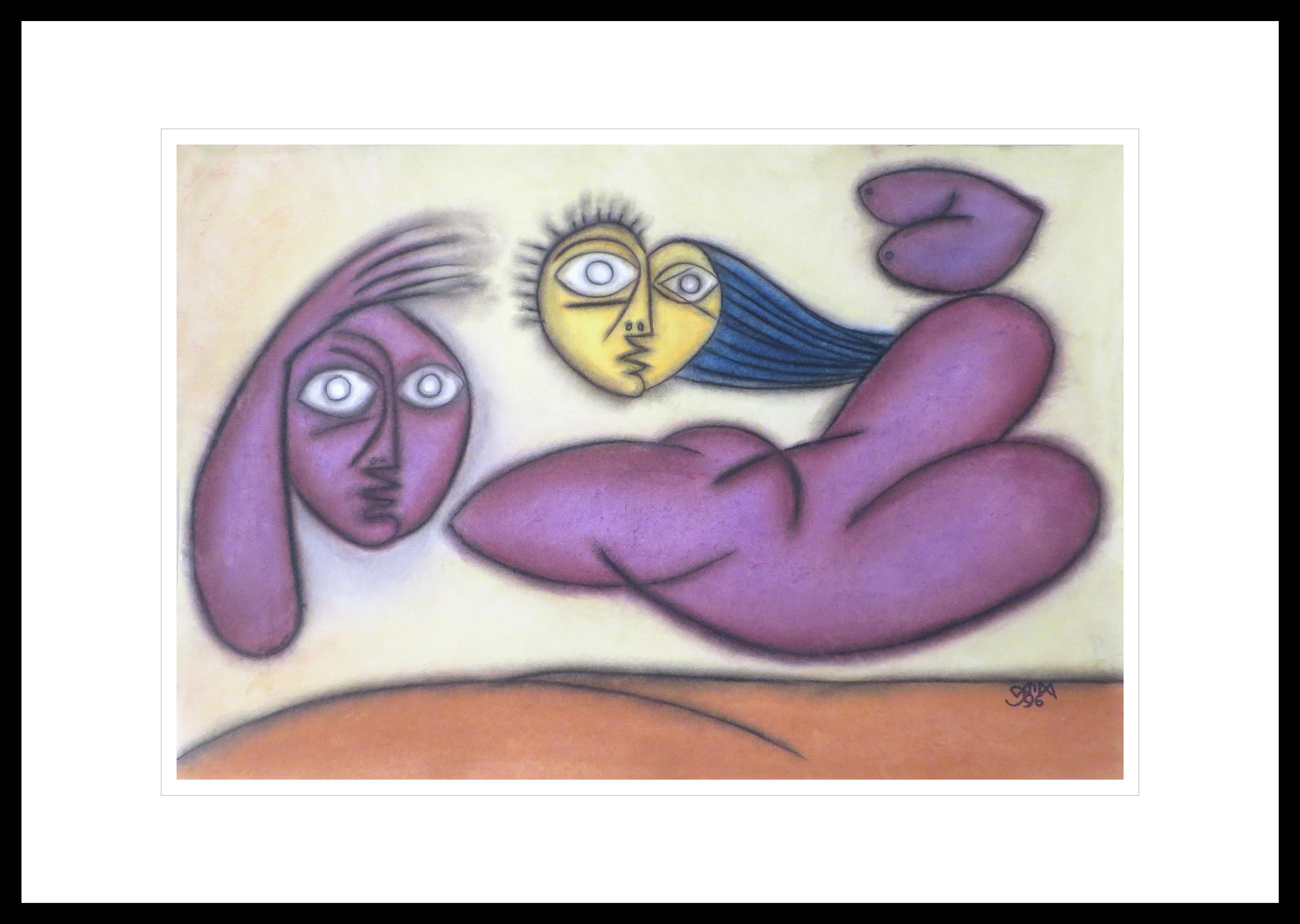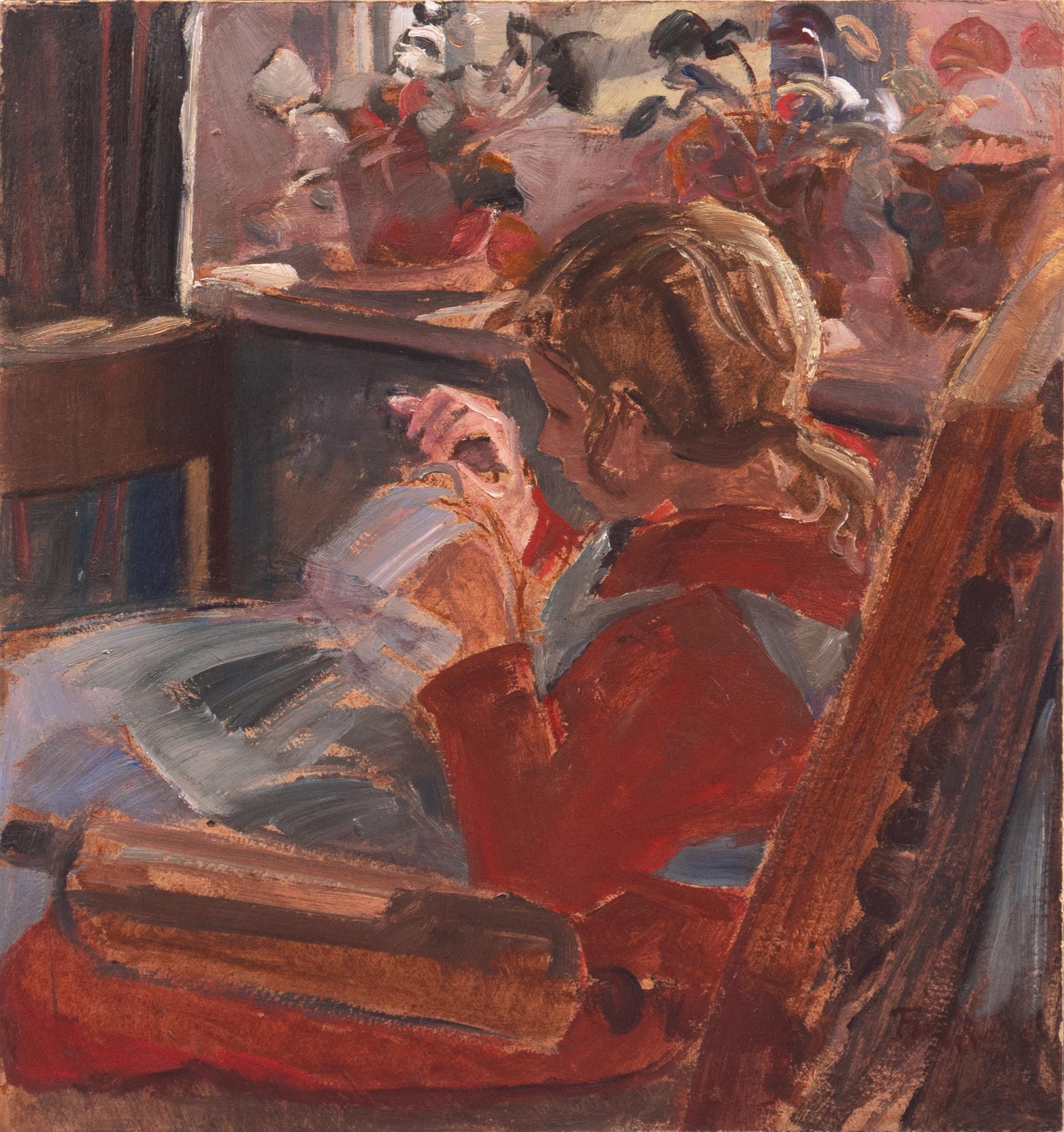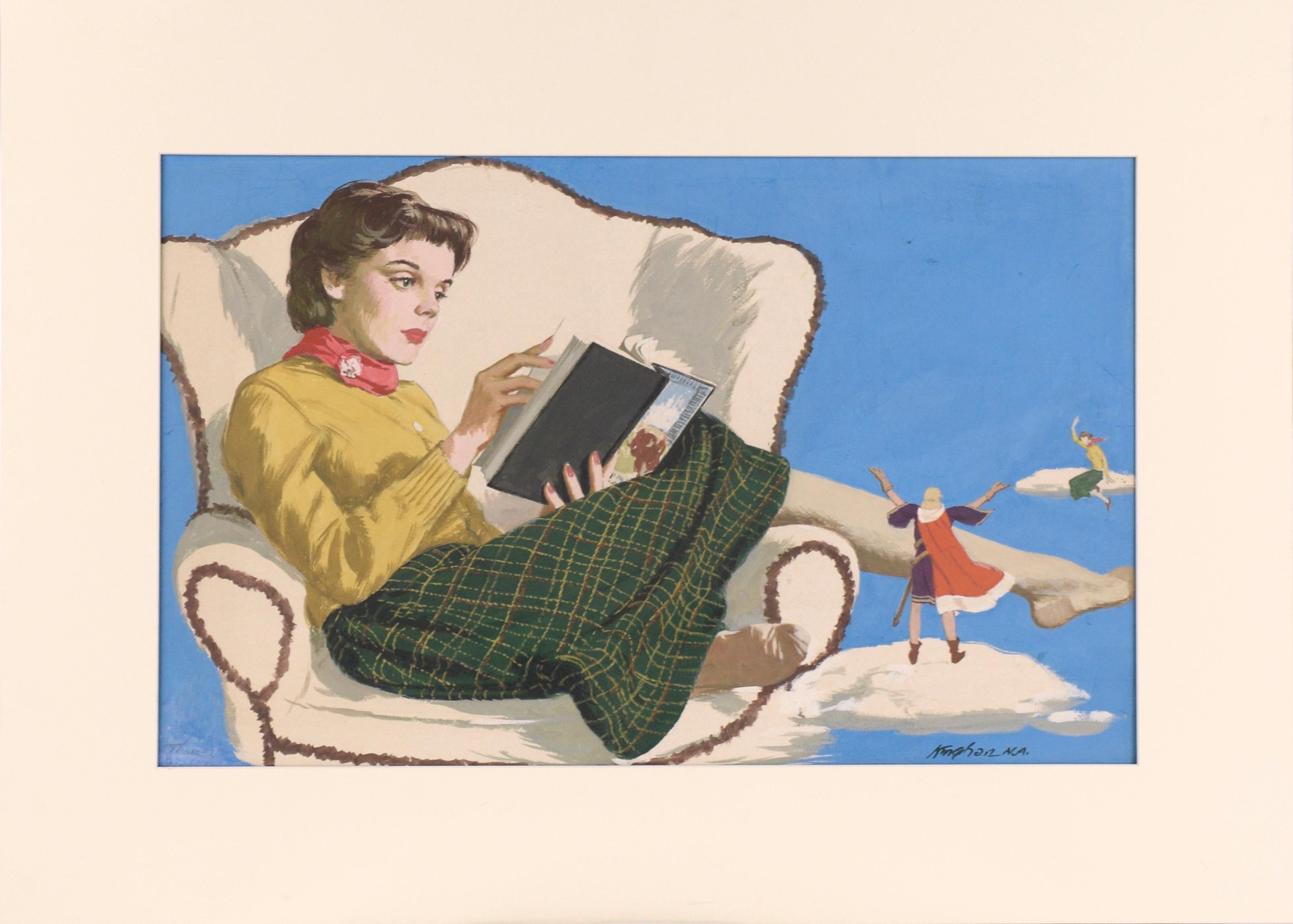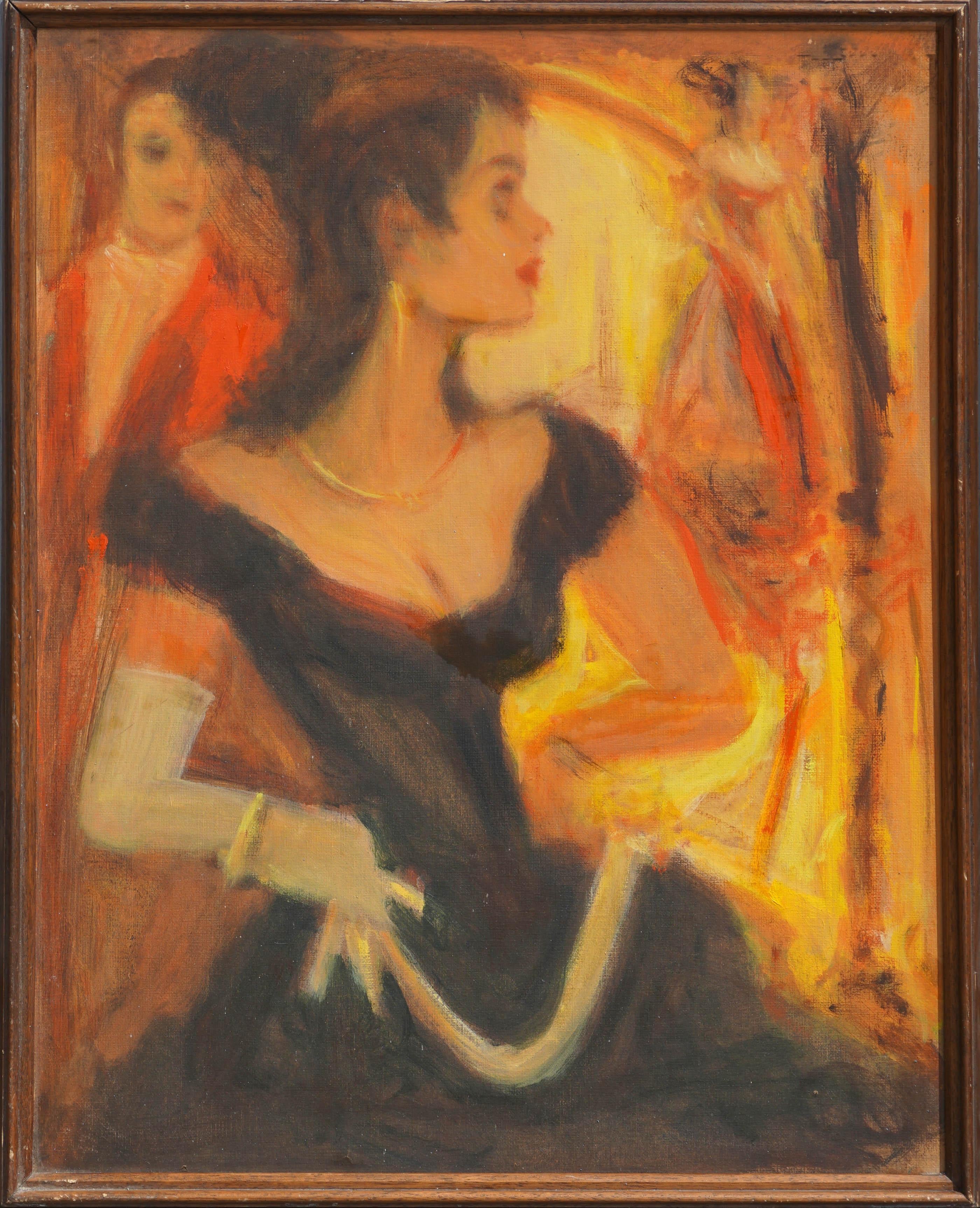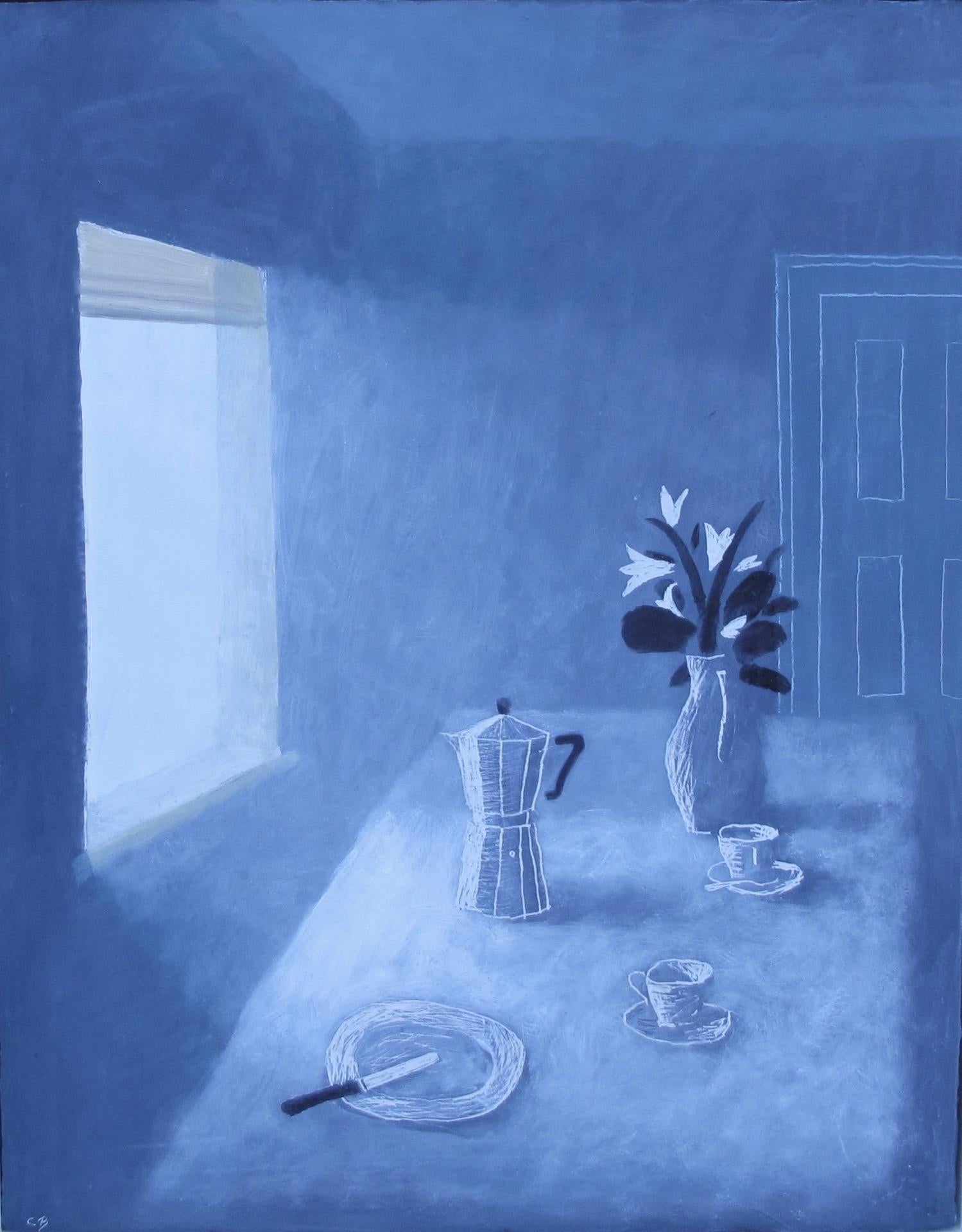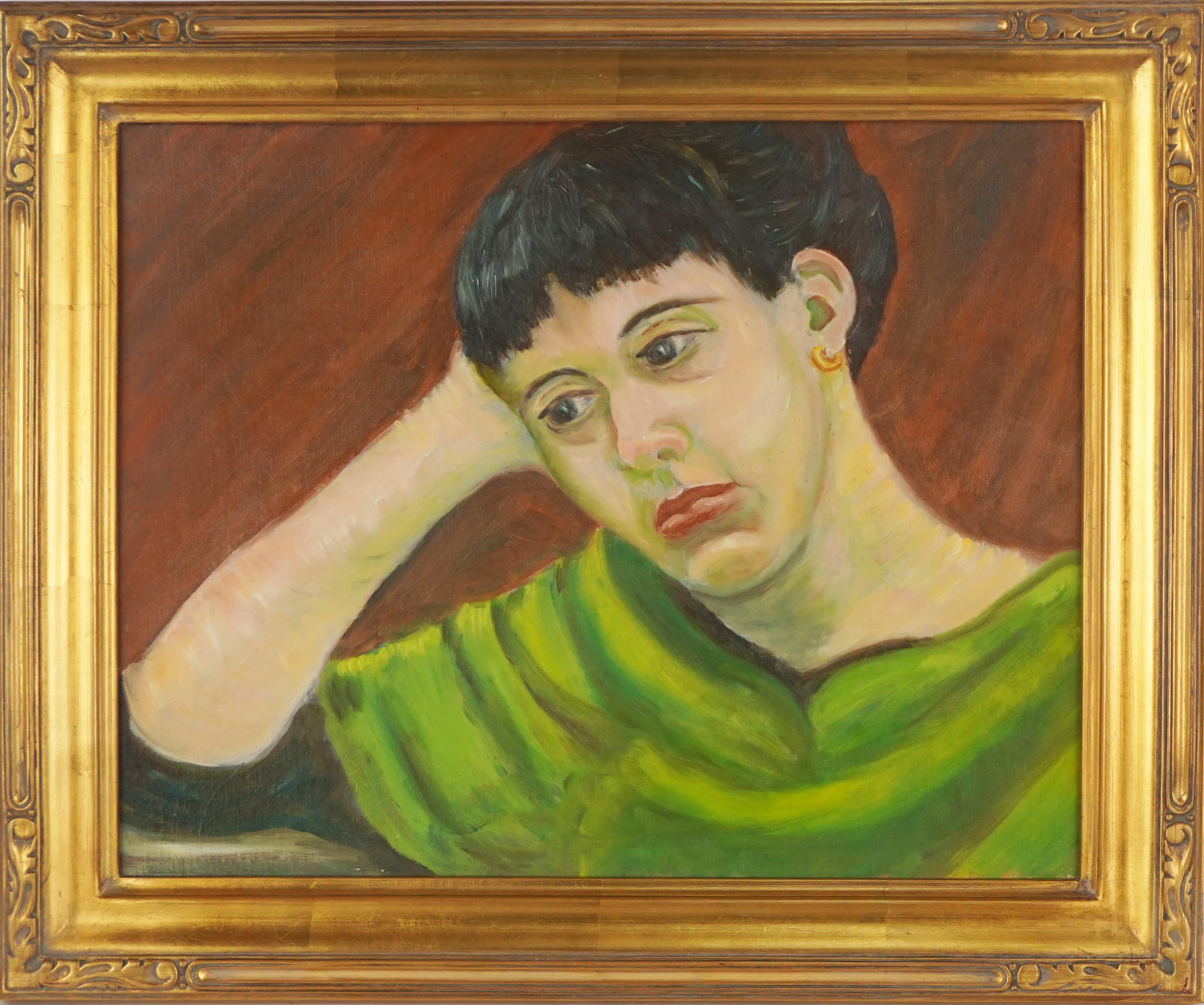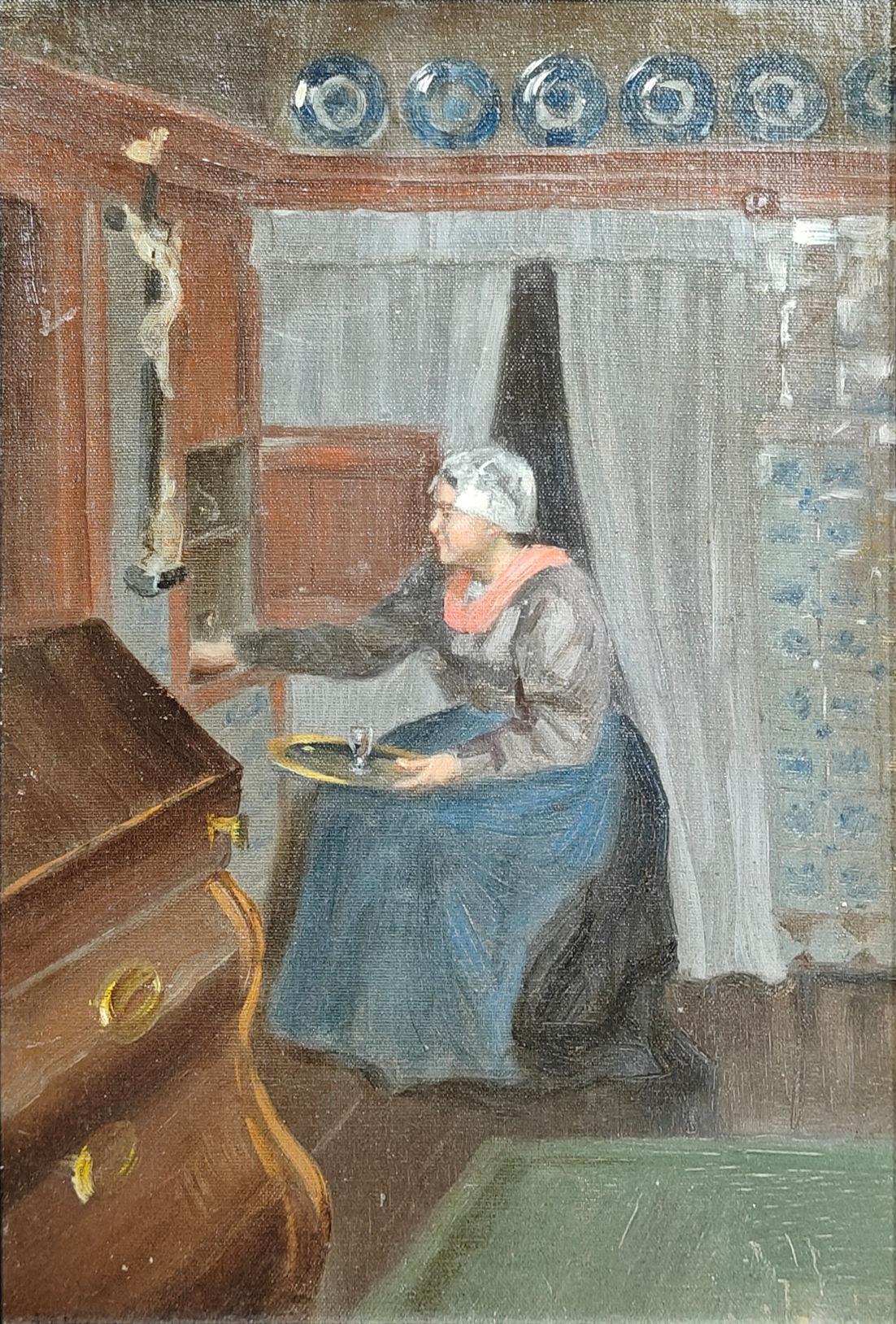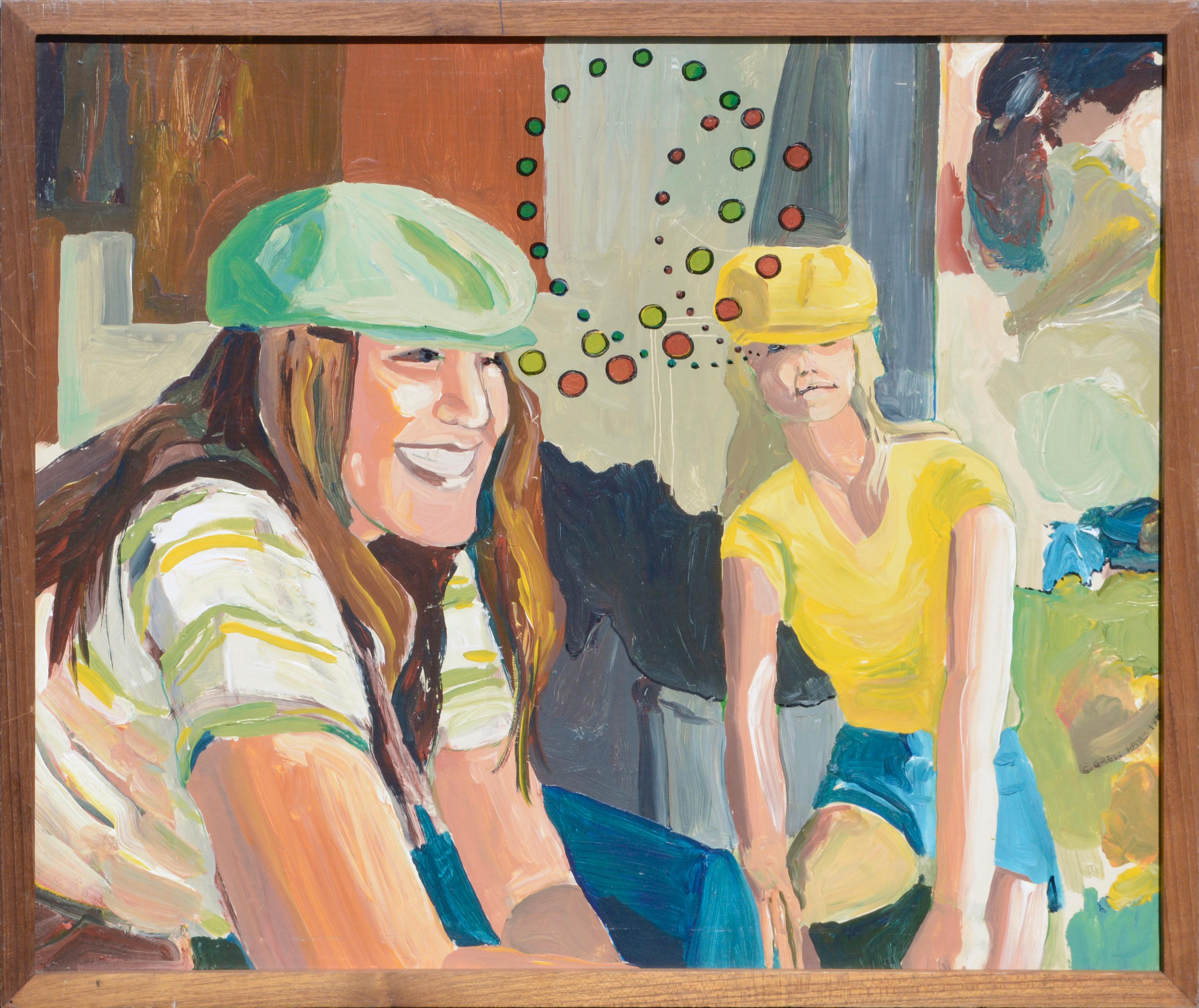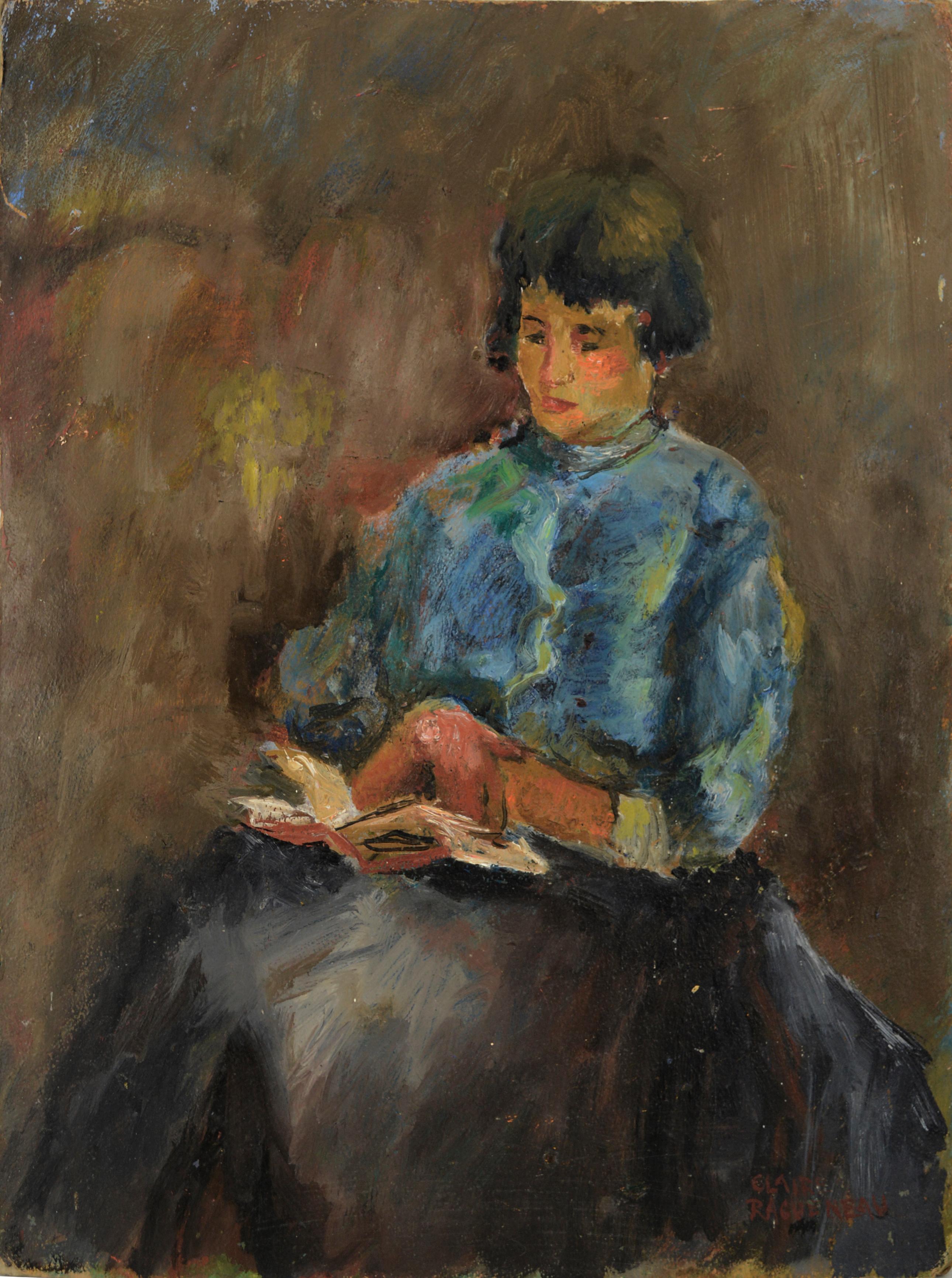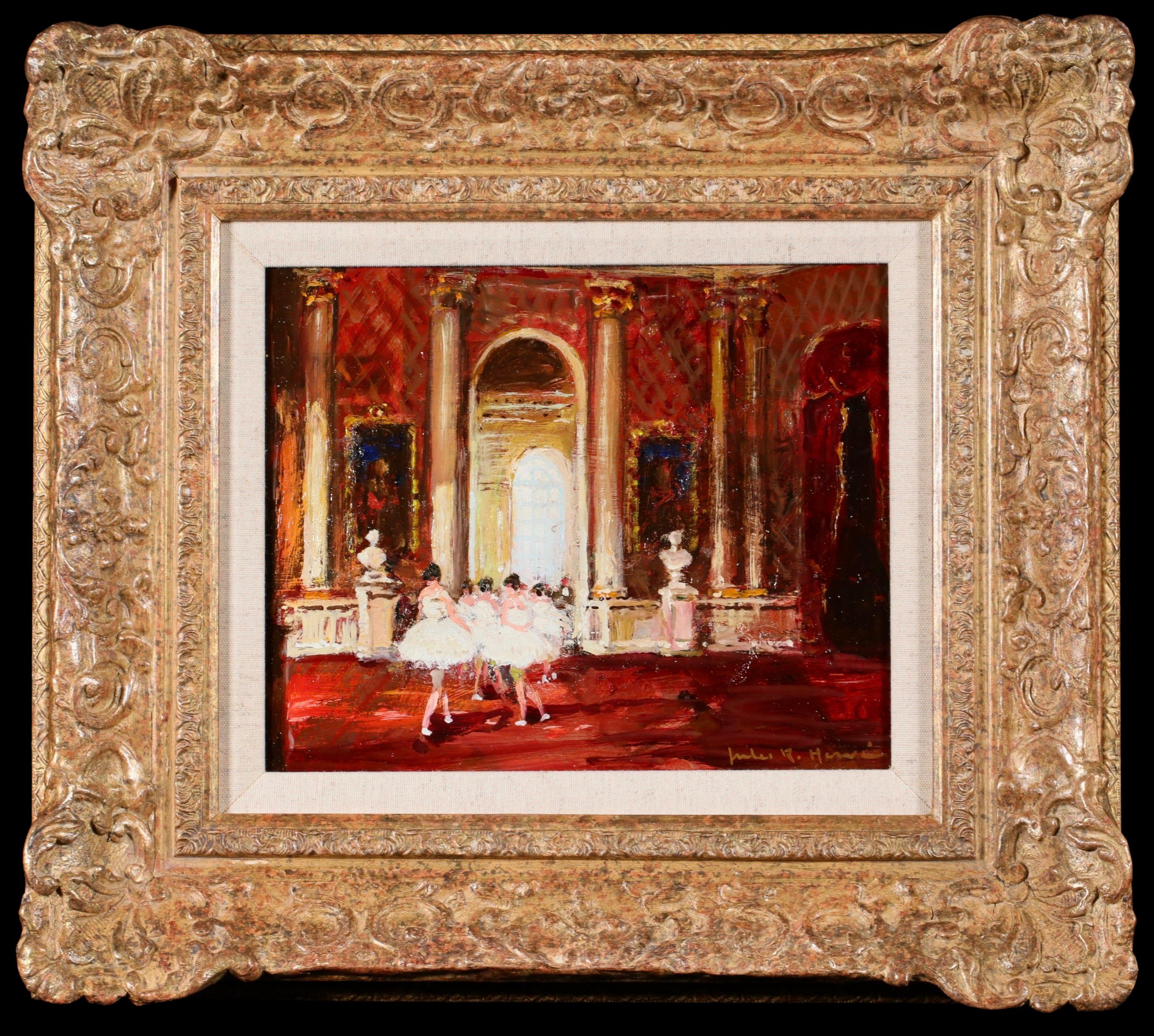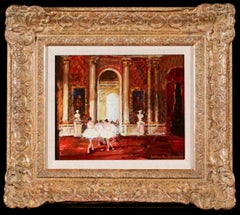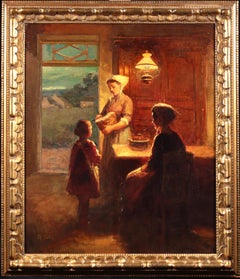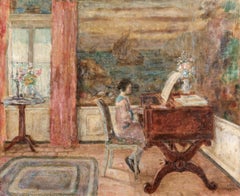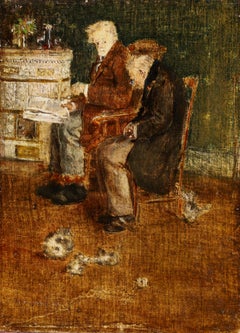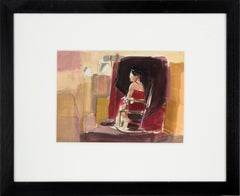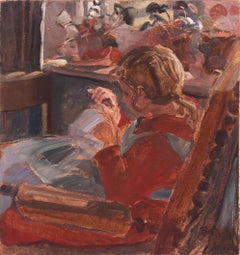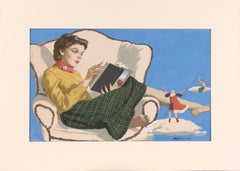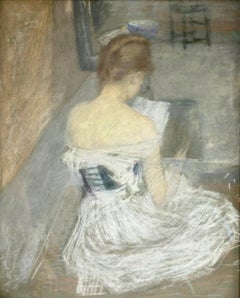
La Lecture
View Similar Items
Want more images or videos?
Request additional images or videos from the seller
1 of 9
La Lecturec.1900
c.1900
About the Item
- Creation Year:c.1900
- Dimensions:Height: 22 in (55.88 cm)Width: 18 in (45.72 cm)
- Medium:
- Movement & Style:
- Period:
- Condition:Very good condition, under glass. Some light age spots to pastel surface.
- Gallery Location:Marlow, GB
- Reference Number:1stDibs: LU41532892921
About the Seller
5.0
Platinum Seller
Premium sellers with a 4.7+ rating and 24-hour response times
Established in 2001
1stDibs seller since 2016
703 sales on 1stDibs
Typical response time: 2 hours
Authenticity Guarantee
In the unlikely event there’s an issue with an item’s authenticity, contact us within 1 year for a full refund. DetailsMoney-Back Guarantee
If your item is not as described, is damaged in transit, or does not arrive, contact us within 7 days for a full refund. Details24-Hour Cancellation
You have a 24-hour grace period in which to reconsider your purchase, with no questions asked.Vetted Professional Sellers
Our world-class sellers must adhere to strict standards for service and quality, maintaining the integrity of our listings.Price-Match Guarantee
If you find that a seller listed the same item for a lower price elsewhere, we’ll match it.Trusted Global Delivery
Our best-in-class carrier network provides specialized shipping options worldwide, including custom delivery.More From This Seller
View AllOpera Garnier Paris - Impressionist Figures in Interior Oil by Jules Rene Herve
By Jules René Hervé
Located in Marlow, Buckinghamshire
Signed figures in an interior oil on board circa 1940 by French impressionist painter Jules Rene Herve. This charming work depicts a grand red room with gold trim filled with balleri...
Category
1940s Impressionist Figurative Paintings
Materials
Oil, Board
Early Evening - Brittany - Impressionist Interior Oil Painting by Edouard Cortes
By Édouard Leon Cortès
Located in Marlow, Buckinghamshire
Signed figures in interior oil on canvas circa 1925 by sought after French impressionist painter Edouard Leon Cortes. This charming and nostalgic work depicts a family in a typical Breton kitchen scene. A lady is seated at the table while another slices a loaf of bread for a young girl. The view from the large window shows cottages in the distance and the last light of the day on the horizon as night falls. The light of an overhead oil burner illuminates the room.
Signature:
Signed lower left
Dimensions:
Framed: 30"x25"
Unframed: 26"x21"
Provenance:
This work has been examined and authenticated by Mme. Nicole Verdier and will appear in Tome IV of the catalogue raisonne. An accompanying certificate from Mme. Verdier is available upon request at a charge of 960 EUR.
Private French collection
Edouard Leon Cortes, the son of the painter Antonio Cortès, was sent to the front during World War I to sketch enemy positions. In civilian life, his base was in Lagny in the former studio of Cavallo-Peduzzi. Although he travelled extensively in France. Notably in Normandy, Brittany, the Champagne region and Savoy...
Category
Early 20th Century Impressionist Figurative Paintings
Materials
Canvas, Oil
The Piano Recital - Impressionist Figurative Interior Oil by Frederick Frieseke
By Frederick Carl Frieseke
Located in Marlow, Buckinghamshire
Signed and dated oil on canvas figure in interior painting by American impressionist painter Frederick Carl Frieseke. The piece depicts a young girl in a pink dress seated at a piano...
Category
1920s American Impressionist Figurative Paintings
Materials
Oil, Canvas
Deux vieillards aux chatons - Impressionist Figurative Oil by J F Raffaelli
By Jean-Francois Raffaelli
Located in Marlow, Buckinghamshire
Signed figures in interior oil on panel by French impressionist painter Jean-Francois Raffaelli. The piece depicts two old men seated in an interior. One is reading his paper as the other naps and there are several kittens on the floor. Painted in the artist's distinctive style.
Signature:
Signed lower left
Dimensions:
Framed: 9.5"x8"
Unframed: 5.5"x4"
Provenance:
Brame & Lorenceau have confirmed the authenticity of this work and it will be included in the digital catalogue raisonne of the painter which is under preparation
A certificate of authenticity fromBrame & Lorenceau accompanies this painting
Private collection - United States
Original artists label verso
Jean-François Raffaëlli's father was a failed Italian businessman and Raffaëlli himself was, among other things, a church chorister, actor and theatre singer. He then studied under Gérôme at the École des Beaux-Arts in Paris. He travelled to Italy, Spain and Algeria and on his return to France settled in Asnières.
In 1876, on a trip to Brittany, he first saw the potential of realist subject matter, if treated seriously. He became involved in meetings of artists at the Café Guerbois, where the Impressionist painters used to gather. As a result, Degas, contrary to the advice of the group, introduced Raffaëlli to the Impressionist exhibitions - according to one uncertain source as early as the very first exhibition, at the home of Nadar, and certainly to those of 1880 and 1881.
In 1904, Raffaëlli founded the Society for Original Colour Engraving. He first exhibited at the Salon de Paris in 1870 and continued to exhibit there until he joined the Salon des Artistes Français in 1881, where he earned a commendation in 1885, was made Chevalier of the Légion d'Honneur in 1889 and in the same year was awarded a gold medal at the Exposition Universelle. In 1906 he was made Officier of the Légion d'Honneur. He was also a member of the Société Nationale des Beaux-Arts. In 1884, a private exhibition of his work cemented his reputation.
He contributed to several newspapers such as The Black Cat (Le Chat Noir) in 1885 and The French Mail (Le Courrier Français) in 1886 and 1887. He published a collection entitled Parisian Characters, which captured his favourite themes of the street, the neighbourhood and local people going about their lives. In 1880 he participated, with Forain, on the illustration of Joris Karl Huysmans' Parisian Sketches (Croquis Parisiens). He also illustrated Huysman's Works. As well as working as an illustrator, he also made etchings and coloured dry-points.
His early attempts at painting were genre scenes, but once he was settled in Asnières he started to paint picturesque views of Parisian suburbs. From 1879 onwards, his subject matter drew on the lives of local people. These popular themes, which he treated with humanity and a social conscience, brought him to the attention of the social realist writers of the time such as Émile Zola. In addition to his realist style, Raffaëlli's dark palette, which ran contrary to the Impressionist aesthethic, helped to explain the opposition of those painters to his participation in their exhibitions. More concerned with drawing than colour, he used black and white for most of his paintings. Towards the end of his life, he lightened his palette, but without adopting any other principles of the Impressionist technique.
After painting several portraits, including Edmond de Goncourt and Georges Clémenceau, he returned to genre painting, particularly scenes of bourgeois life. Later in his career, he painted mainly Breton-inspired sailors and views of Venice. His views of the Paris slums and the fortifications, sites which have almost completely disappeared, went some way towards establishing a genre in themselves and perpetuated the memory of the area: The Slums, Rag-and-Bone Man, Vagabond, Sandpit, In St-Denis, Area of Fortifications. His realistic and witty portrayal of typical Parisian townscapes accounts for his enduring appeal.
Born in Paris, he was of Tuscan descent through his paternal grandparents. He showed an interest in music and theatre before becoming a painter in 1870. One of his landscape paintings was accepted for exhibition at the Salon in that same year. In October 1871 he began three months of study under Jean-Léon Gérôme at the École des Beaux-Arts in Paris; he had no other formal training.
Raffaëlli produced primarily costume pictures until 1876, when he began to depict the people of his time—particularly peasants, workers, and ragpickers seen in the suburbs of Paris—in a realistic style. His new work was championed by influential critics such as J.-K. Huysmans, as well as by Edgar Degas.
The ragpicker became for Raffaëlli a symbol of the alienation of the individual in modern society. Art historian Barbara S. Fields has written of Raffaëlli's interest in the positivist philosophy of Hippolyte-Adolphe Taine, which led him to articulate a theory of realism that he christened caractérisme. He hoped to set himself apart from those unthinking, so-called realist artists whose art provided the viewer with only a literal depiction of nature. His careful observation of man in his milieu paralleled the anti-aesthetic, anti-romantic approach of the literary Naturalists, such as Zola and Huysmans.
Degas invited Raffaëlli to participate in the Impressionist exhibitions of 1880 and 1881, an action that bitterly divided the group; not only was Raffaëlli not an Impressionist, but he threatened to dominate the 1880 exhibition with his outsized display of 37 works. Monet, resentful of Degas's insistence on expanding the Impressionist exhibitions by including several realists, chose not to exhibit, complaining, "The little chapel has become a commonplace school which opens its doors to the first dauber to come along."An example of Raffaëlli's work from this period is Les buveurs d'absinthe (1881, in the California Palace of Legion of Honor Art Museum in San Francisco). Originally titled Les déclassés, the painting was widely praised at the 1881 exhibit.
After winning the Légion d'honneur in 1889, Raffaëlli shifted his attention from the suburbs of Paris to city itself, and the street scenes that resulted were well received by the public and the critics. He made a number of sculptures, but these are known today only through photographs.[2] His work was also part of the painting event in the art competition at the 1912 Summer Olympics. In the later years of his life, he concentrated on color printmaking. Raffaëlli died in Paris on February 11, 1924
Museum and Gallery Holdings:
Béziers: Peasants Going to Town
Bordeaux: Bohemians at a Café
Boston: Notre-Dame; Return from the Market
Brussels: Chevet of Notre-Dame; pastel
Bucharest (Muz. National de Arta al României): Market at Antibes; Pied-à-terre
Copenhagen: Fishermen on the Beach
Douai: Return from the Market; Blacksmiths
Liège: Absinthe Drinker...
Category
1890s Impressionist Figurative Paintings
Materials
Oil, Panel
Les Baigneuses - Impressionist Figurative Landscape Oil by Jean Louis Forain
By Jean Louis Forain
Located in Marlow, Buckinghamshire
Signed impressionist figurative oil on canvas circa 1890 by sought after French impressionist painter Jean Louis Forain. The piece depicts bathers in a dark landscape.
Signature:
Signed lower right
Dimensions:
Framed: 32"x37"
Unframed: 24"x29"
Provenance:
Private French collection
Jean Forain was the son of a painter and decorator and was apprenticed to a visiting card engraver. He studied briefly under Gérôme and Carpeaux at the École des Beaux-Arts in Paris and regularly visited the Louvre, where he copied works by the masters. It is said that for a time he made a precarious living by selling small drawings in the style of Grévin. He went on to collaborate on various publications as a draughtsman and columnist, starting in 1876 on La Cravache and then collaborating on the newspapers Le Journal Amusant, Le Figaro and L'Écho de Paris. This introduced him to the diverse worlds of Paris society - the world of the theatre, of shows, and of literature - where he wryly noted the habits and shortcomings particular to each. This led him to follow a route very characteristic of this period, already seen in the work of Steinlen, Caran d'Ache and Toulouse-Lautrec in the journals La Pléiade, La Vogue...
Category
1890s Impressionist Figurative Paintings
Materials
Canvas, Oil
A Breton Interior - Impressionist Interior Oil Painting by Edouard Cortes
By Édouard Leon Cortès
Located in Marlow, Buckinghamshire
Signed figures in interior oil on canvas circa 1910 by sought after French impressionist painter Edouard Leon Cortes. This charming and nostalgic work depicts a family enjoying dinner in a typical Breton kitchen scene. A man and lady are seated at the table while a woman serves them from a steaming pot. The light of an overhead oil burner illuminates the room.
Signature:
Signed lower right
Dimensions:
Framed: 26"x23"
Unframed: 18"x15"
Provenance:
This work will be included in the supplement to Tome III of the Catalgue Raisonne of Edouard Cortes under preparation by Mme. Nicole Verdier
This work is accompanied by a photo certificate from Mme. Nicole Verdier under reference EC221203/HT/GEO-241
Edouard Leon Cortes, the son of the painter Antonio Cortès, was sent to the front during World War I to sketch enemy positions. In civilian life, his base was in Lagny in the former studio of Cavallo-Peduzzi. Although he travelled extensively in France. Notably in Normandy, Brittany, the Champagne region and Savoy painting...
Category
Early 20th Century Impressionist Interior Paintings
Materials
Canvas, Oil
You May Also Like
Model in the Studio - Figurative in Gouache and Pastel on Paper
Located in Soquel, CA
Evocative figurative painting of a woman seated in a studio by an unknown artist (20th Century). A woman dressed in red is sitting in a chair atop a platform. There are studio lights...
Category
Early 2000s American Impressionist Figurative Paintings
Materials
Paper, Pastel, Gouache
Face, Large Eyes, Pastel, Board, Violet, Blue, Brown by Indian Artist-In Stock
By Prokash Karmakar
Located in Kolkata, West Bengal
Prakash Karmakar - Untitled - 20 x 29 inches ( unframed size )
Pastel on Board
Inclusive of shipment in roll form
This work is amongst the more rarer work by the artist executed.
...
Category
1990s Modern Figurative Paintings
Materials
Pastel, Board
'Young Girl Sewing' Paris, Universal Exposition, Danish Oil, Pont Aven, Brittany
Located in Santa Cruz, CA
Signed lower right, 'Find' for Ludvig Find (Danish, 1869-1945) and painted circa 1900.
Ludvig Find first attended Copenhagen's School of Fine Arts and Kroyer's school (1888) before ...
Category
Early 1900s Impressionist Figurative Paintings
Materials
Oil, Board
"Adventures in Literature" Figurative 1930's Illustration art
Located in Soquel, CA
A wonderful original figure painting for a 1930's illustration by Charles Kinghan (American, 1895-1984). A woman in a plaid green skirt and mustard yel...
Category
1930s American Impressionist Figurative Paintings
Materials
Cardboard, Acrylic
$1,080 Sale Price
20% Off
Woman in Black Dress Pulp Art Portrait/Couple Dancing Figurative, 2 sided
Located in Soquel, CA
Wonderful two-sided mid century pulp art figurative painting of a woman at party in black evening gown and formal gloves, and on verso couple dancing by unkno...
Category
1960s American Impressionist Figurative Paintings
Materials
Masonite, Acrylic, Cardboard
Morning Coffee
By Charlie Baird
Located in Deddington, GB
Charlie Baird
Morning Coffee
Mixed Media on Board
Size: H 46cm x W 36cm
Sold in a White Float Frame
(Please note that in situ images are purely an indic...
Category
2010s Impressionist Figurative Paintings
Materials
Board, Mixed Media

